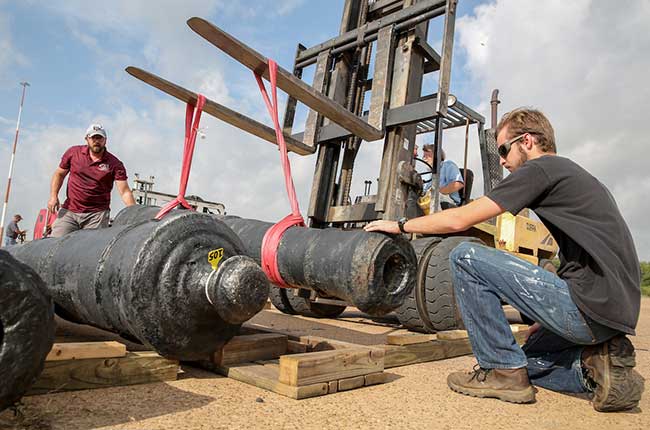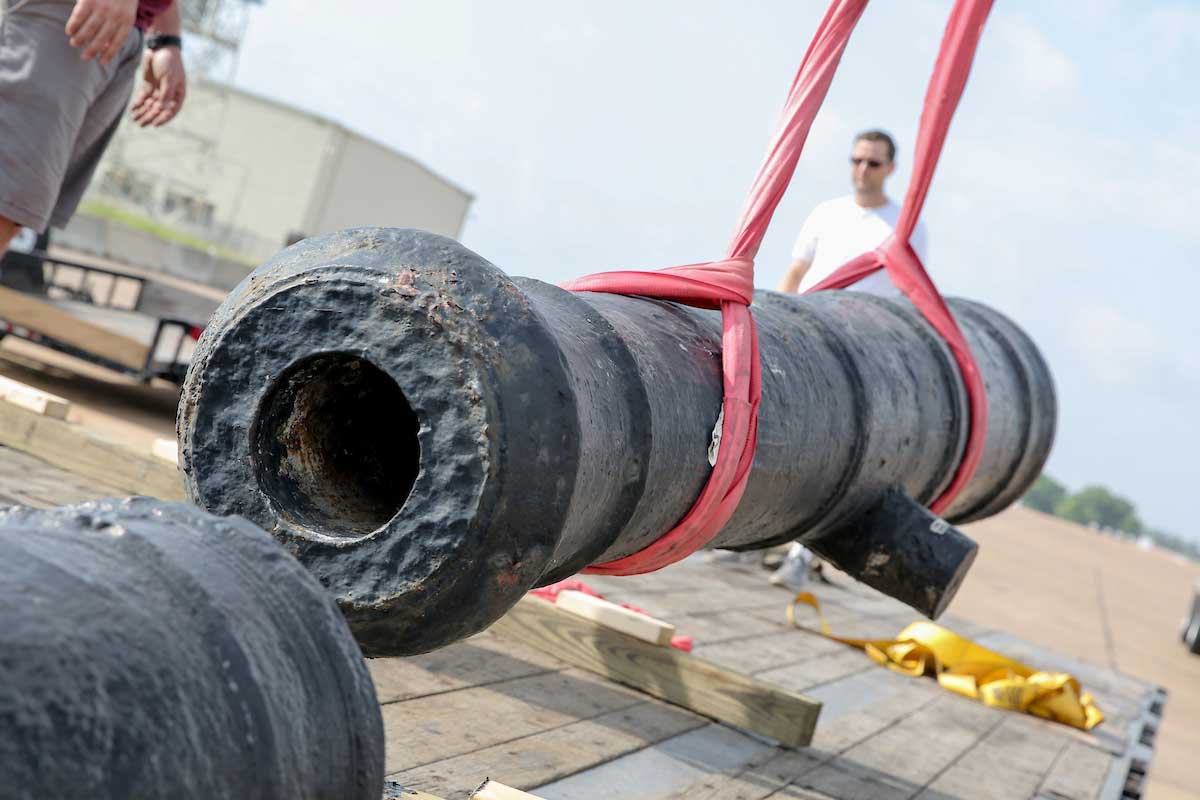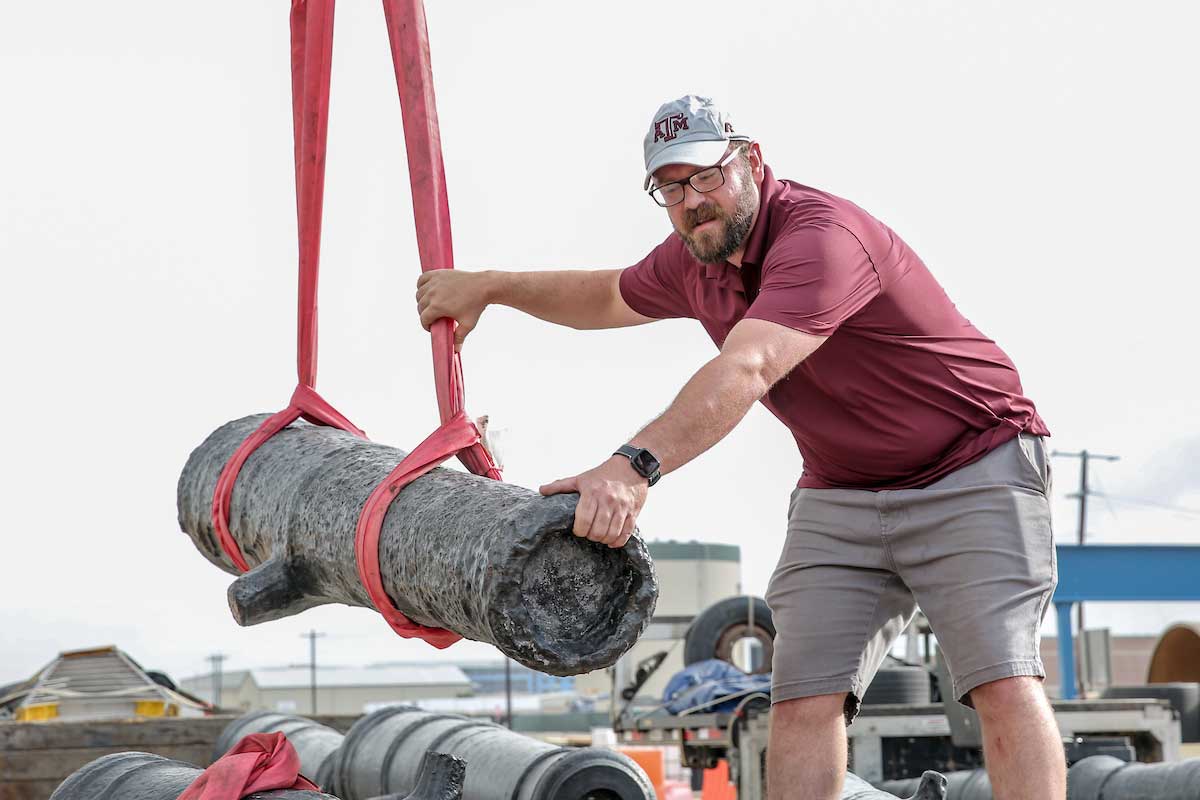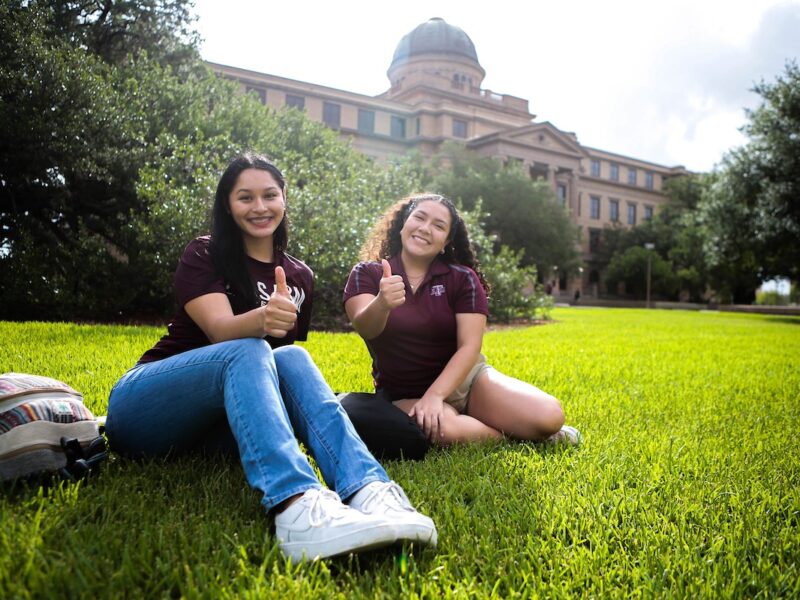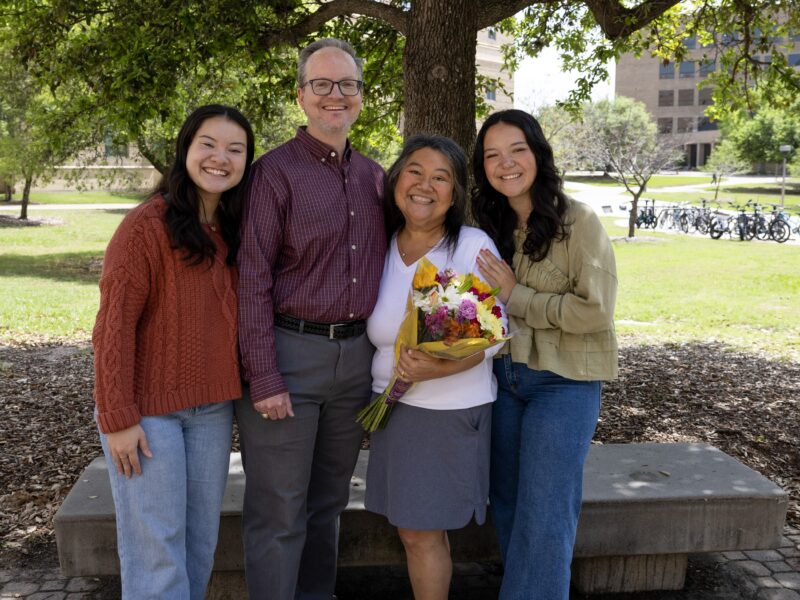The Conservation Research Laboratory (CRL) at Texas A&M University is restoring 25 cannons from the Castillo de San Marcos, the oldest masonry fort built in the continental United States. Now a national monument in St. Augustine, Florida, the fort is home to cannons from periods ranging from 1690 to 1846. The first 14 cannons arrived at the lab June 11.
“The last time these cannons were worked on was in the 1990s,” said Chris Dostal, a research assistant for the CRL. “They’re on the coast of Florida, and the salt could turn them into piles of rubble if we don’t keep them from corroding.”
Originally built by Spaniards during the 17th century to protect the harbor against pirates, the Castillo de San Marcos is located on Matanzas Bay. In 1763, the British took control of St. Augustine and the fort for more than 20 years, followed by Spanish control again for almost 40 years, and America annexed Florida in 1821. Castillo de San Marcos became a U.S. national monument in 1924, and the National Park Service (NPS) assumed management of the historic structure and surrounding land approximately a decade later.
Throughout that long history, cannons have come and gone. Some of the cannons on display transferred with the fort to the NPS while others arrived over the years as donations.
“Because these cannons were donated, we don’t know much information about them. They’re kind of a hodge-podge,” Dostal said. “Our graduate students will research them, and our goal is to give them back to the fort with more information than they came to us with.”
Dostal estimates the restoration process will take from six months to two years, depending on the amount of corrosion.
“Cast iron is a porous metal on a microscopic level, so the salt can get in there pretty deep,” he said. “The treatment will get all the salts and corroding products out of the metal but we can’t know how long that will take. It really depends on the individual cannon.”
The restoration project will cost an estimated $458,000.
“What’s really cool about this project is that it’s being paid for out of ticket sales to the park instead of it being a tax-payer burden,” Dostal said. “That’s really rare.”
The cannons from the Castillo de San Marcos are not the only ones the CRL is working on. They also are conserving cannons from the Alamo and the CSS Georgia, a Civil War ironclad.
“I think we are working on 20 cannons at the moment, so we’re definitely the best-armed lab in the country,” Dostal said.
###
Media contact: Heather Rodriguez at 979-845-6061 or hrodriguez@tamu.edu; or Elena Watts at 979-458-8412 or elenaw@tamu.edu
